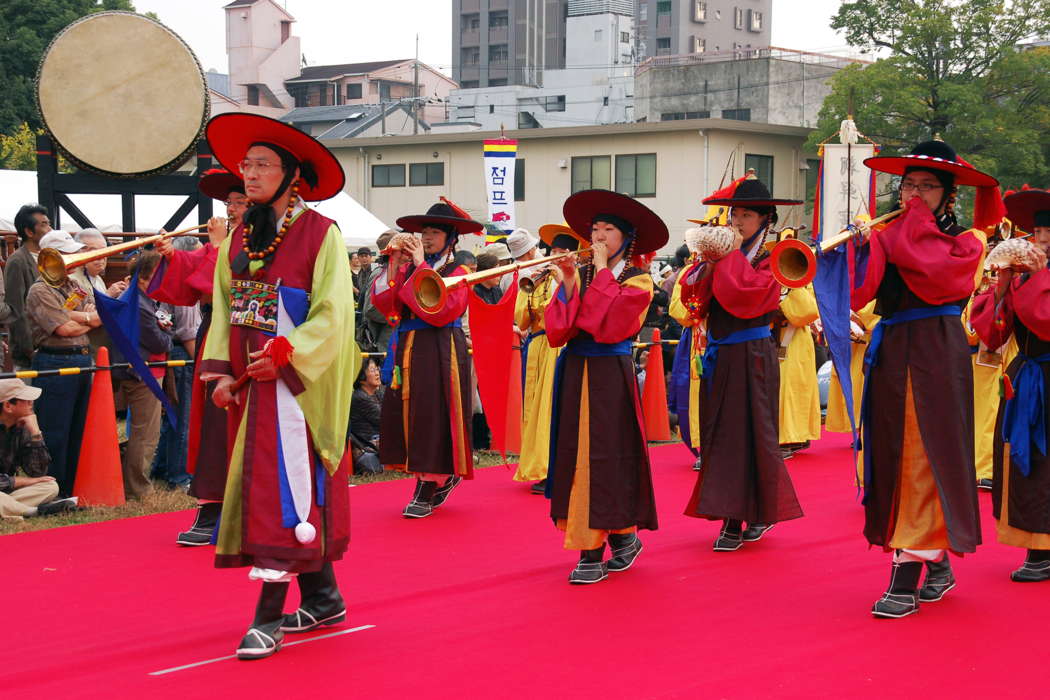- Gian Paolo Mele
- solo piano
- Percy Grainger
- Nørgård
- baryton music
- BBC series Civilisation
- David Lang: Poor Hymnal
- William Croft
 DISCUSSION: John Dante Prevedini leads a discussion about Composers, individuals or collective?, including contributions from David Arditti, Halida Dinova, Robert McCarney and Jane Stanley.
DISCUSSION: John Dante Prevedini leads a discussion about Composers, individuals or collective?, including contributions from David Arditti, Halida Dinova, Robert McCarney and Jane Stanley.
 CENTRAL ENGLAND: Mike Wheeler's concert reviews from Nottingham and Derbyshire feature high profile artists on the UK circuit - often quite early on their tours.
CENTRAL ENGLAND: Mike Wheeler's concert reviews from Nottingham and Derbyshire feature high profile artists on the UK circuit - often quite early on their tours.
SPONTANEOUS CREATIVITY

Some distinguishing features of Korea's traditional music, by SIMON FARRUGIA
Throughout their long history, Koreans have had an outstanding love of music and dance. Historical records say that thousands of years ago, villagers gathered to sing and dance to celebrate the harvests, probably explaining the origin of folk music and dance still widely enjoyed and appreciated.
Korea's traditional music for the royal and noble classes consists of secular music of T'ang and Sung Chinese origin and Korean native music including court and Confucian ritual music. They are usually slow, solemn and complex in their intertwining and long, elaborate melodic lines.
Sog-ak, music for the common people, includes shaman and Buddhist ritual music, folk songs, farmers band music, and dramatic songs called p'ansori. They are usually colourful, vibrant, and more appealing to the emotions.
The dances that go with some of the court music are likewise stately and highly stylized. Folk dance, in contrast, is usually fast and lively, featuring vigorous movements. Native Korean musical instruments, many adapted from Chinese prototypes, include plucked string zithers, flutes and double reeds, and a variety of percussion. The human voice is traditionally accompanied by drum only to mark the beat.
Korean music influenced that of China or Japan in ancient times, and later, it was in turn significantly influenced by Chinese or Central Asian music. We will take a look at some of the important features of Korean music.

A 2006 photo by M Louis of a traditional Korean band in Seoul, South Korea (CC 2.0)
A leisurely tempo is a general feature of Korean music. In particular, most of the music that makes up the genre known as Jeongak has a slow tempo. Such a slow tempo gives pieces a distinctly calm, meditative character. The leisurely pace of some Korean music is due to the importance placed on breathing, with each beat being matched to the player's inhalation and exhalation.
The tone colour of Korean music in general, and the Jeongak genre in particular, is warm and soft. In fact, the timbre of the music can be attributed to the fact that Korean instruments are made of non-metallic substances. The wind instruments tend to be made of wood; even the stringed instruments have silk strings instead of wire. To this extent, Koreans like the warm and gentle feeling of natural materials.
Korean music is characterized by spontaneity. This is more evident in folk music genres, with their emphasis on feeling, than in the Jeongak style which seeks to control emotional expression. This emotional exuberance makes it easy for Koreans to enter into religious ecstasy. The music genres known as sanjo (solo instrument and drum accompaniment) and pansori (solo vocalist with drum accompaniment) amply demonstrate this. These genres have an open form that encourages spontaneous creativity.
Korean musical pieces are usually linked together when performed. This phenomena is evident in gagok, a Korean genre similar to the Western song cycle. Gagok consists of over twenty long vocal pieces that are accompanied by a small chamber ensemble. When sung, each piece is run into the composition that follows without any clear break.
The tempo distribution of traditional Korean music is unique. Unlike Western music, which alternates between slow and fast movements, Korean music normally begins with a slow tempo that gradually speeds up as a piece progresses. In suites, the initial pieces are performed at a slow tempo which gradually picks up in the pieces that follow. This phenomena can perhaps be attributed to the emotional, non-intellectual character of the Korean people. The gradual increasing tempo leads to self-absorption, which finally culminates in an ecstatic state beyond the confines of ego - a phenomena common to Korea's shamanic culture.
Lastly one cannot understand such music through merely listening; to fully appreciate it, one must be aware of its underlying philosophical significance. Traditional Korean music, like its art of history, is a category so broad that it is difficult to talk about briefly. Together with more than sixty distinct instruments, forty-five of which are still played today, Korean music has its own distinct repertory and musical forms. Most radio stations today play pop music, which is cranked out by new groups that spring up every day. However whatever music Koreans listen to, almost any Korean would agree that she or he lives in a country of music people.
Copyright © 11 October 2021
Simon Farrugia,
Malta

CLASSICAL MUSIC ARTICLES ABOUT NORTH KOREA
CLASSICAL MUSIC ARTICLES ABOUT SOUTH KOREA

